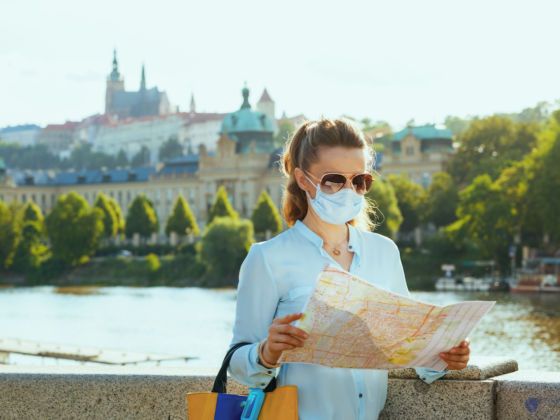At the moment, it’s safe to say that the available information regarding whether or not it’s safe to travel is confusing. Most airlines require that travelers wear masks, but once you get to your destination the same rules might not be strictly enforced. In the United States, states offer conflicting guidelines about mask-wearing, restaurant dining, and social distancing.

How Countries Can Safely Reopen, According to the World Travel and Tourism Council
To provide some guidance, the World Travel and Tourism Council (WTTC) has issued standardized safety protocols to help countries across the globe welcome travelers safely back to their shores — and to help travelers understand the safest places to travel.
On June 19, the WTTC released its Safe Travel: Core Protocol Requirements. It has since issued a further series of specialized requirements for every travel-related industry, including hospitality, outdoor shopping, tours, airports, convention centers, and car rentals. Countries that agree to follow these requirements will receive the WTTC’s Safe Travels stamp, which is intended to signal to travelers that the country in question is doing its best to reopen safely. So far, 29 countries have received the stamp, including Spain, Portugal, Egypt, Indonesia, Brazil, and Jamaica.
“The WTTC created the Safe Travels stamp and global safety protocols in order to rebuild confidence among consumers so they can travel safely once again,” Virginia Messina, the managing director of the WTTC, wrote to Matador Network in an email. “The protocols aim to provide consistency to destinations and countries.”
The core protocols offer generalized procedures that businesses, like restaurants, coffee shops, grocery stores, and shopping centers, can follow to slow the spread of COVID-19. For instance, the WTTC suggests requiring PPE for all employees, adopting “contactless payments or digital menus,” and erecting plexiglass dividers between employees — as long as costs are not prohibitive for the business in question. The guidelines also urge travelers to wear masks whenever they interact with other people, including on outdoor excursions, indoor events, and any time they’re in public or private transportation.
“For car rentals we recommend pre-arrival health declaration via email, and encourage use of curb side pick-up and drop off,” Messina says. “For short term rentals we recommend providing guests with physical distancing etiquette, including in elevators if relevant, and having available hand sanitizer to guests at entrance. Additionally, for airports we suggest enhancing food safety at restaurants and reducing passenger touchpoints.”
It’s understandable that, regardless of these recommendations, potential travelers might still be cautious before hopping on a plane to enjoy their vacation as though it’s business as usual. Yet travelers can rest assured that the WTTC is dedicated to being honest about what travelers can expect on their next business trip or vacation. It won’t look anything like you’re last vacation — in fact it might well be more difficult to navigate: The guidelines are realistic about the fact that anyone thinking about traveling right now will be facing strict hygiene, mask-wearing, sanitation, and social distancing standards.
“One of the most important parts of recovery is rebuilding trust with the traveler, and a good way to do this is with clear and effective communication — this can be achieved through a set of global common guidelines that work in coordination together,” Messina says. “[Our] protocols aim to provide consistency to destinations and countries as well as guidance to travel providers, operators, and travellers, about the new approach to health and hygiene in the post COVID-19 world.”
While conscientious travelers should be on the lookout for the stamp, it’s important to note that if your intended destination hasn’t adopted the WTTC protocols that doesn’t necessarily mean it should be stricken from your bucket list. Messina concedes that countries that aren’t certified with the stamp aren’t automatically unsafe. Those countries might have their own individual set of guidelines — including quarantine requirements — that visitors are required to follow, so it’s up to travelers to do their research before setting off.
But that’s the very thing that makes the WTTC guidelines so necessary: Every country that adopts its standards cuts down on the mess of conflicting information to give travelers one set of easy-to-understand guidelines that are applicable across countries and continents. If international travel is on your radar in the near-future, the WTTC standards are likely as close as anyone is going to get to a standard set of travel guidelines.
“Our concern is that it creates confusion for travelers if there is not a global coordinated approach to health and safety leading to recovery,” Messina says. “While there may be many different approaches that are effective, it does not help to instill confidence in the traveler if it is not immediately legible to them which protocols are and are not effective.”
For now, international travel, especially on airplanes, might still feel unsafe for most people. But when (and if) countries adopt a clear cut set of protocols that help tourists feel secure, we get one step closer to returning to a world where travel is the norm. The Safe Travels stamp will make it easier for people to decide where to travel and what precautions to take when the time feels right.